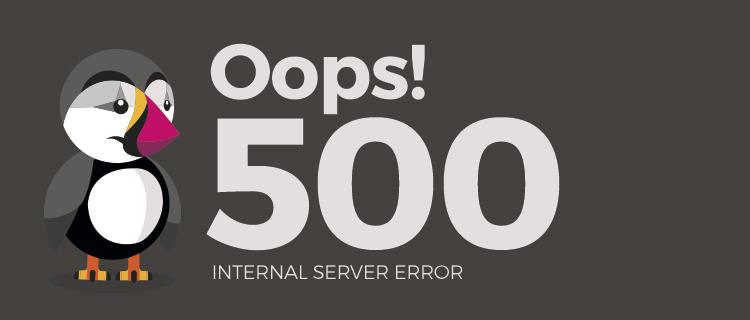Some time its happen when we hit some service, Its display default error messages as 500 Internal Server Error on the client’s browser.
500 Bad Request Error
- 5xx (e.g. 500) indicates server-side errors
- 5xx (e.g. 500) codes tell the client something happened on the server and their request by itself was perfectly valid. The client can continue and try again with the request without modification.
- If your API is trying to save a record to a database and this fails because there is an error with the database, for instance, it’s not reachable, or a constraint fails, use a 5xx code
- Preferably 500 – Internal server error, always adds a response to what went wrong. This response SHOULD be displayed to the client, or if it’s an automated system, it can retry again with the same request.
- If you as a client receive a 500 status code, you can decide to try again (after a waiting period, for a set number of times) to see if the server can handle the same request later on. Some status codes like 503 can return a retry-after header. This can be used to figure out how long a client SHOULD wait until a next attempt should be tried.
How to Fix the 500 Internal Server Error
Like we alluded to above, the 500 Internal Server Error is a server-side error, meaning the problem probably isn’t with your computer or internet connection but instead with the website’s server.
While not probable, it is possible that there’s something wrong on your end, in which case we’ll look at some things you can try:
- Reload the web page. You can do that by clicking the refresh/reload button, pressing F5 or Ctrl-R, or trying the URL again from the address bar.
- A PHP Timeout. If your script connects to external resources and those resources timeout, an HTTP 500 error can occur. Timeout rules, or better error handling in your script, should help if this is the cause of the 500 error.Clear your browser’s cache. If there’s a problem with the cached version of the page you’re viewing, it could be causing HTTP 500 issues.
- Fixing 500 Internal Server Error Problems on Your Own SiteA 500 Internal Server Error on your own website requires a completely different course of action. As we mentioned above, most 500 errors are server-side errors, meaning it’s likely your problem to fix if it’s your website.
- 500 Internal Server Error is no doubt a problem outside of your control that will eventually get fixed by someone else.Contacting the website directly is another option. There’s a good chance that the site’s administrators already know about the 500 error, but if you suspect they don’t, letting them know helps both you and them (and everyone else).
- Troubleshoot as a 504 Gateway Timeout error instead.It’s not very common, but some servers produce a 500 Internal Server Error when in reality 504 Gateway Timeout is a more appropriate message based on the cause of the problem.
- Contacting the website directly is another option. There’s a good chance that the site’s administrators already know about the 500 error, but if you suspect they don’t, letting them know helps both you and them (and everyone else).
- Delete your browser’s cookies. Some 500 Internal Server Error issues can be corrected by deleting the cookies associated with the site you’re getting the error on.
- After removing the cookie(s), restart the browser and try again.
- Delete your browser’s cookies. Some 500 Internal Server Error issues can be corrected by deleting the cookies associated with the site you’re getting the error on.
- After removing the cookie(s), restart the browser and try againTroubleshoot as a 504 Gateway Timeout error instead.
- It’s not very common, but some servers produce a 500 Internal Server Error when in reality 504 Gateway Timeout is a more appropriate message based on the cause of the problem.Even if the 500 Internal Server Error is a problem on the web server, the issue might just be temporary. Trying the page again will often be successful.
- A Permissions Error. In most cases, a 500 Internal Server Error is due to an incorrect permission on one or more files or folders. In most of those cases, an incorrect permission on a PHP and CGI script is to blame. These should usually be set at 0755 (-rwxr-xr-x).
- A Coding Error in .htaccess. While not as common, be sure to check that your site’s .htaccess file is properly structured.





